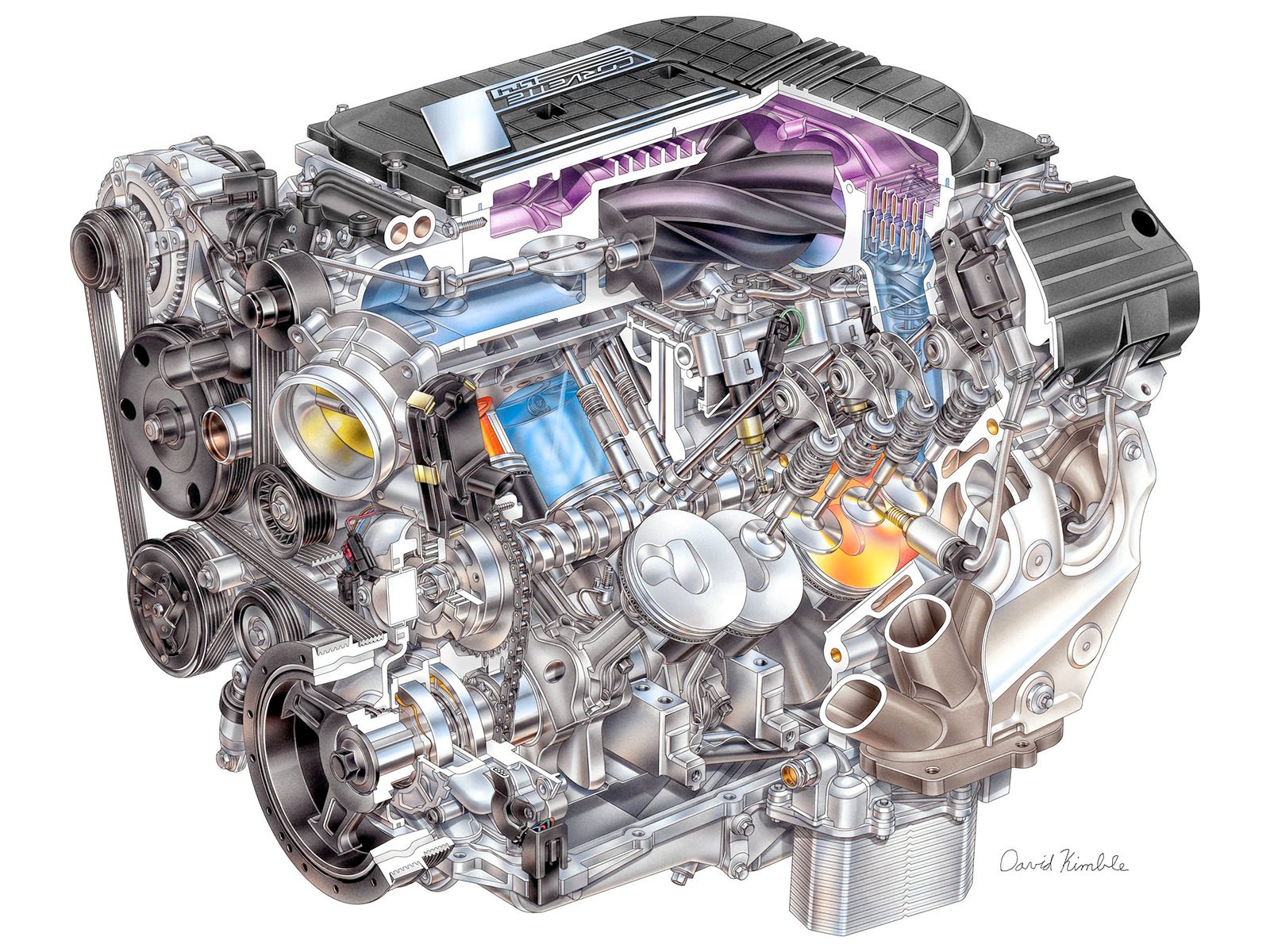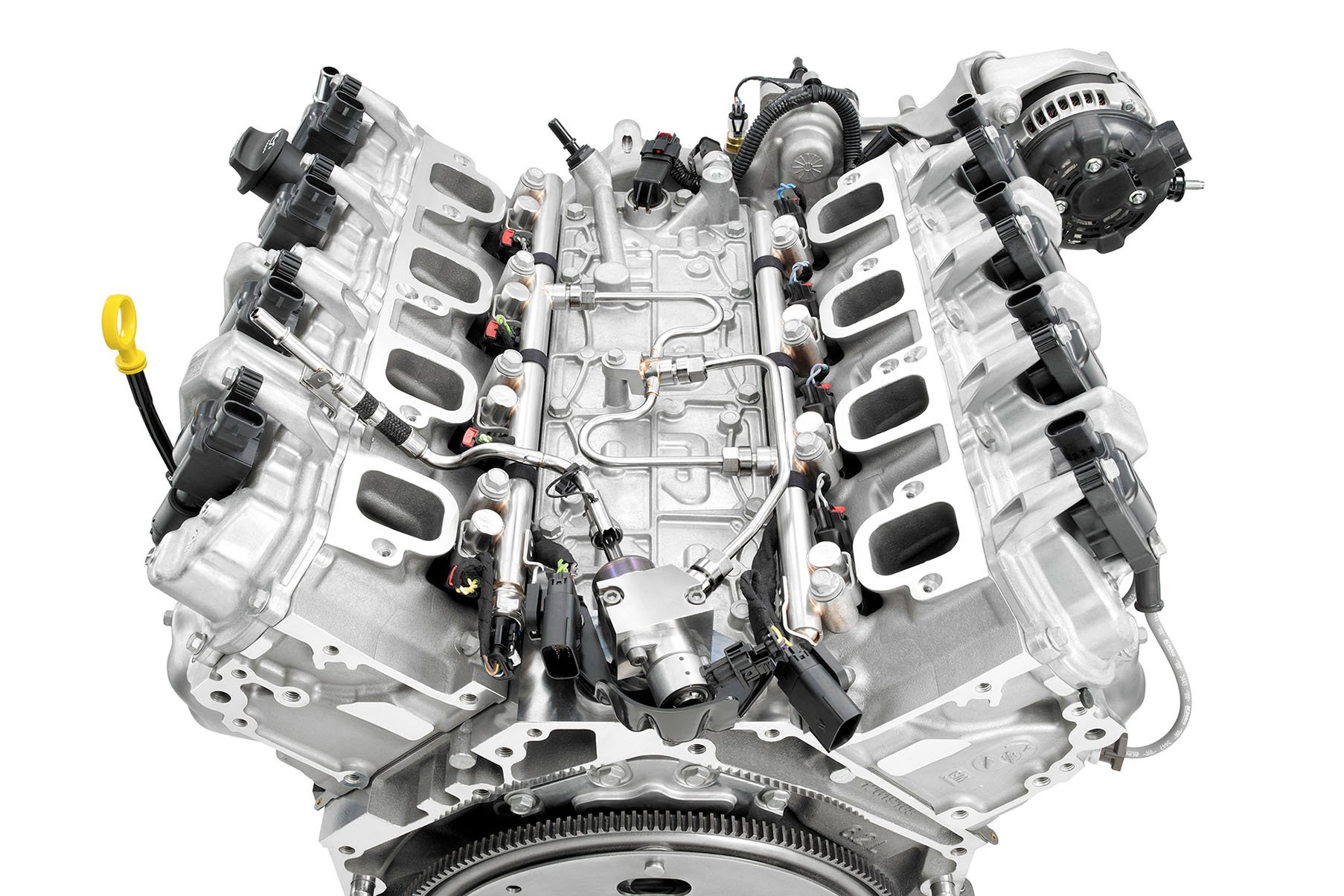It is critical for the direct injection LT1 and LT4 engines to maintain proper fuel supply and there is always a lot of misinformation out there about what fuel options there are and what is actually safe. WEAPON-X was one of the pioneers with the direct injection fuel system when we picked up my 2014 C7 Corvette at the end of 2013 and created what would be quite a monstrous 427 cubic inch 13:1 E85 burning beast, ultimately making 612whp on our Mustang dyno and then bringing the pain on top with a 300 shot of direct port nitrous. We have learned quite a lot since then, and I wanted to share some of the things we do every day with the LT motors.
 The Overview:
The Overview:
For daily driving, you would normally see the car attempt to target the stoich AFR of 14.7:1 if you have a wideband gauge hooked up; however, with 10% ethanol in a lot of pump gas today, you see the program setup for 14.1:1 to account for that blend in some pump gas. When you mash the pedal to go wide open throttle (WOT), the vehicle goes into what is called "PE Mode" or "Power Enrichment Mode" looking for values approximately 12:1. This defers to another table that has modifiers of your aforementioned stoich AFR values. The Mass Air Flow (MAF) tables and the Dynamic Airflow (VE) tables provide the basis for the manipulated fueling requested, taking into account a lot of other factors like the injector size in lbs/hr, the requested fuel line pressure, the requested fuel rail pressure, and the Start Of Injection (SOI) which tells the injector when to fire.
How it works:
The system essentially uses two pump technologies. The low side AKA lift pumps/in-tank pumps are the pumps in the fuel tank that are controlled by the Fuel Pressure Control Module (FPCM) for power output to the pumps to get the fuel supply from the tank up to the rail. The system requests approximately 50 PSI during normal driving and jumps this up to approximately 72 PSI when going WOT.
From there, the fuel gets to the High Pressure Fuel Pump (HPFP) that is located under the supercharger on the valley of the engine, in-between the cylinder heads. The high pressure pump has a lot of command technology which references it's position as the plunger rides up and down on a specifically ground lobe on the camshaft to pressurize the fuel as it goes through the pump to 20 MPA.

The pressurized fuel enters the CNC bent fuel lines and travels to the rails, and then enters the injectors. These injectors unlike previous years port injection are located similarly to a spark plug, through the cylinder head with the tip projecting into the combustion chamber. Since the engines are direct injected, the fuel is fired into the cylinder at nearly 2,900 PSI on the compression stroke. The injected fuel will vaporize before the piston reaches top dead center (TDC), which allows for much more predictable fueling and more accurate/higher target AFRs. The benefits are less wasted fuel and a better AFR potential as a result; however, some of the drawbacks as you'll see below are fuel supply and delivery vs. cost. Another drawback is the lack of the fuel cleaning the valves, which on a parasitic PCV system like the GM OHV engines use, they use the engine to draw the crank case pressure though it to maintain seal life and longevity, at the expense of future performance if proper care isn't taken.
 The Dangers:
The Dangers:
We all know with more power, there is a need for more fuel to maintain the proper air fuel ratio (AFR). Also, those wanting to run ethanol will see the need for a much higher fuel demand, approximately 35-40% on boosted engines when in WOT.
So, you're asking the low side to supply this added fuel, the high side needing to supply that much more fuel to the injectors, and the injectors to squeeze out that much more during the same half stroke. Too little fuel volume or fuel pressure can result in catastrophic failure. These are two separate scenarios that can occur together or separately. When the engine needs more fuel, the HPFP has to be able to supply the volume of fuel needed for the engine, but as the fuel demand increases, the injectors become an issue because they can only supply fuel to the cylinder on the compression stroke. Once you exceed about 5m/s of open time on the injector, you're running the risk of fuel "puddling" aka not flashing to vapor as previously mentioned and this part is critical since it's injected right before TDC. This puddling can be seen on the dyno, especially in higher RPMs by a trained eye and a dyno graph that doesn't have a million "smoothing factor" LOL.
The SOI table can be modified some based on the camshaft to start the injection sooner; however, too soon, and you're just spraying fuel out of the exhaust. Widening the SOI also has a direct affect on the rail pressure as well, since the HPFP can only supply so much fuel and maintain the desired 2,900 PSI rail pressure and you want to maintain target by about 5%. If you go too far off of target, the car can go into REP mode trying to protect itself and tragically, we've seen cars that had the code disabled trying to hide this, which is not only unadvised, but just asking for an engine rebuild. The line pressure and feed to the HPFP has a direct correlation to the ability of the HPFP being able to maintain rail pressure as it is a "push" type of logic obviously, not a "pull". So the fuel pressure has to be strong from the tank! If the line pressure isn't force feeding the HPFP, the entire system will falter.
These scenarios are not always realized on the dyno either! It is imperative once you tune your vehicle that you verify the rail pressure on the street, because the car can rip through gears and deplete the rail much more quickly than you can see on the dyno, even a loaded dyno like our Mustang 1100 AWD. So, the more power you're after, the more fuel you need! Next, we'll discuss all of the available methods of getting the much needed fuel.
